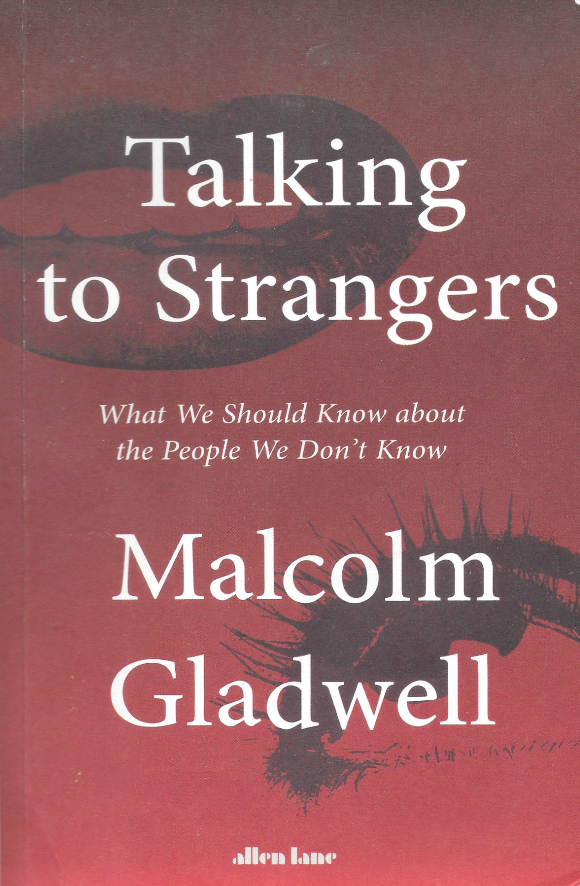The one sentence summary
When talking to strangers we need to understand that transparency is a myth, we default to truth, and we don’t know the context, so we may well judge them incorrectly.
WHAT THE BOOK SAYS

- There’s a lot we should know about the people we don’t know. Strangers are never simple, and misreading them can have disastrous consequences.
- As ever with this author, the book covers a wide range of examples from history, psychology and infamous legal cases to paint a picture of encounters and misunderstandings. Strangers are not easy and it’s a messy problem.
- Puzzle number 1: Why can’t we tell when the stranger in front of us is lying to our face? We are notoriously bad at this (Chamberlain and Hitler are often cited).
- Puzzle number 2: How is it that meeting a stranger can sometimes make us worse at making sense of that person than not meeting them? (Judges are more likely to make inappropriate parole and sentencing judgements when they meet defendants).
- Truth-Default-Theory (TDT, coined by Tim Levine) is where we tend to take people’s word for it. Evolution should have favoured people able to pick up subtle signs of deception, but it hasn’t. Instead we default to the assume it’s the truth. Around 50% of the time, we are fooled by liars.
- Transparency is a myth – an idea we have picked up from television that makes us believe we can read people. Facial Action Coding Systems (FACS) don’t help much either. There is a whole industry that looks at whether we can read people’s faces, but we aren’t good at it.
- On top of these errors we often add another: we do not understand the context in which the stranger is operating. Coupling and context are therefore vital components.
- We are much better than chance at correctly detecting people telling the truth, but much worse than chance at identifying liars. So we are truth-biased. The root of this is that in these circumstances people don’t have enough doubts to trigger them out of truth-default. The right question here is: are there enough red flags to push you over the threshold of belief? This is best summed up by the statement: I believed in you always until I couldn’t anymore.
- We are particularly bad in those situations when the person we are judging is mismatched. In other words, we are good at matching the expected behaviour to the circumstance. But we are bad at getting it right if people don’t behave as expected, according to conventional societal norms.
WHAT’S GOOD ABOUT IT
- Even on simple word completion exercises, people who don’t know a person will look at the results and make instant (and usually wrong) judgements about the stranger. This happens with brief encounters too. Even so-called experts in deception are regularly duped by those who are lying.
- Holy fools are truth-tellers who have a different sense of the possibility of deception. They are always on the lookout for it, but they are a relatively rare sub-set.
- Alcohol is an agent of myopia. It creates a state of shortsightedness. The thing in the foreground becomes more salient and the thing in the background less so.
- To sum it all up: because we do not know how to talk to strangers, when things go awry, we blame them.
WHAT YOU HAVE TO WATCH
- Not much. This is the usual high quality storytelling we expect from this author.
